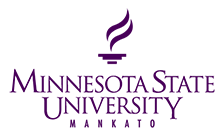

Minnesota State Mankato is a place where big ideas meet real-world thinking and where students come to achieve great things, but no student can do it all alone. To complement the incredible faculty on campus, we offer dedicated student affairs professionals who are able to assist students in developing and realizing their own big ideas.
Refer or Report A Concern About A Person
Refer or report a student of concern. The appropriate staff will follow-up.
Support Students
Support Minnesota State Mankato students with a gift that will directly impact the opportunities they have on campus.
Life Help: Basic Needs Resources
Minnesota State University, Mankato recognizes the challenges that college students face every day. This website includes resources that you may find helpful to navigating life. This website includes resources that you may find helpful to navigating life.
Student Complaints and Appeals
Resources to assist Minnesota State Mankato students identify the most effective venue to address appeals, engage offices/departments/divisions regarding a complaint, or submit a formal complaint/grievance to the University.
About the Office of Student Affairs
Through partnerships with students and faculty, Student Affairs aims to create a student-centered environment that fosters student exploration, leadership and the development of both big ideas and real-world thinking.
Staff/Faculty Resources
Student Affairs works with faculty and staff throughout the university to provide an engaging experience at Minnesota State Mankato. We encourage our faculty and staff colleagues to take advantage of the opportunities to engage with students and access resources we provide as needed.
Maverick Moments
Stories highlighting the students, faculty, staff, and/or events from Student Affairs Offices that are fostering big ideas and real-world thinking on campus and in the community.
Our Departments
The staff of the Student Affairs departments are committed to providing the resources, opportunities, and support to help maximize the student experience!
Support Our Students
Student Affairs division offers numerous opportunities for people to make a difference in our students lives.
Refer or Report a Concern About a Person
Report information or refer individuals for assistance by completing the reporting/referral form below that best matches your concern.
vote2024
Voting is important for our national, state, and local elections. Whether you are a Minnesota resident or out of state, check out the rest of this site to learn more about how to register to vote and the information/materials you will need to register.
Why Student Affairs
Why work in student affairs

